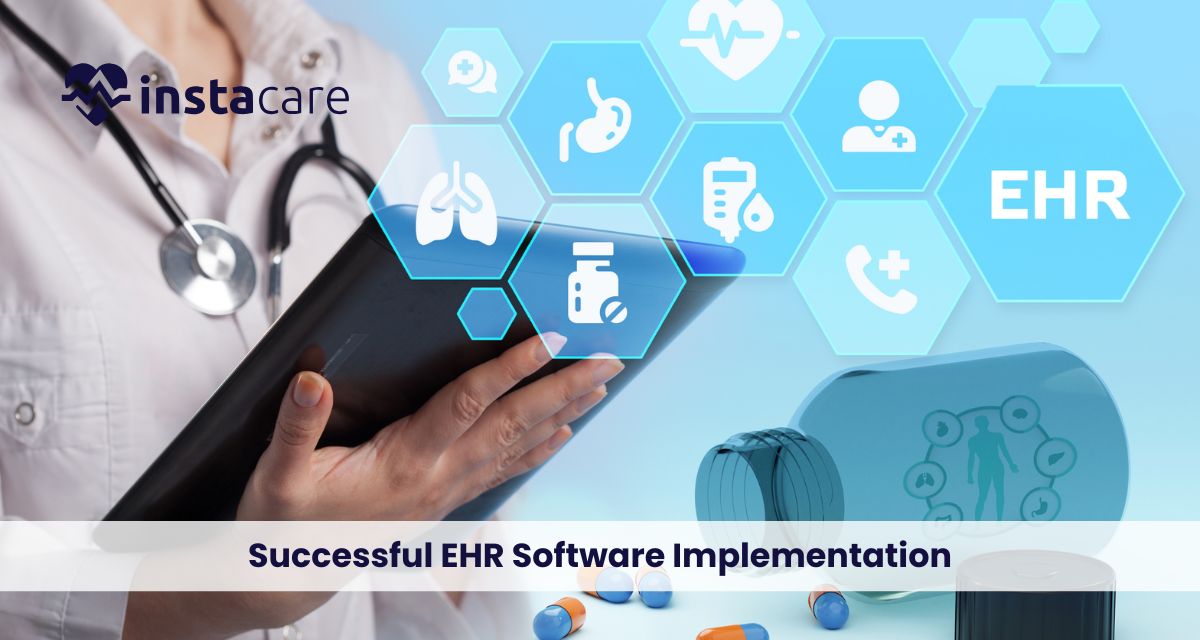Last updated on Friday, 18, October, 2024
Electronic Health Record systems basically revolutionize the delivery of health care services in a vast number of countries, including Pakistan. The digitization of patient records improves efficiency, accuracy, and quality of care delivered at hospitals. This blog examines EHR Software implementations in Pakistani hospitals, discussing their strategies and fruitful results and challenges.
Table of Contents
Introduction to EHR Systems:
Electronic health records are computerized versions of patients’ paper charts. It comprises all the details related to the medical history, diagnoses, drugs, treatment plans, dates of immunization and test results. EHR systems will pave the way for enhanced healthcare services as they offer better data management hence giving easy access to the information about the diseases of patients to the health care providers.
Significance of EHR in Pakistan
There are several issues that the current health care system faces in Pakistan today; these include inefficiencies, problems related to miscommunication, and data management. EHR Software systems will help eradicate all these issues in the following ways:
- Patient Safety: Patient Safety by Making Medication Errors of Treatment Complicated
- Coordination of Care: Coordination of Care through Efficient Communication among the Physicians
- Administrative Simplification: Have all the administrative procedures simplified using less paper work and other administrative operations
- Data Analysis: Stream data analysis to improve public health management in making better decisions over policies.
Case Study 1: Shifa International Hospital, Islamabad
Background
Shifa International Hospital is among the best in Pakistan; it is well-known for practice on quality care. In 2018, SIH thought of implementing the EHR Software system to improve operational efficiency and look after patients.
Implementation Strategy
SIH followed a step-by-step implementation of EHR.
- Needs Analysis: SIH conducted a comprehensive needs analysis that covered all the stakeholders; to be precise, physicians, nurses, and the IT staff. This ensured that the new system would cater to the peculiar needs of its users.
- Vendor Selection: From a wide array of EHR Software vendors, SIH selected one that could be customized easily and was user-friendly. The vendor provided comprehensive training and support.
- Phased Rollout: The rollout was phased. In the first instance, the hospital focused on outpatient services. Subsequently, the rollout to inpatient services was transitioned where the staff adapted and changed gradually.
- Training and Support: All the staffers were involved and given in-depth training on the new EHR system. During and even after the transition, continuous support was granted.
Challenges Encountered
Despite the planning done at SIH, the organization still managed to face some of the following challenges:
- Resistance to Change: Some of the employees were not willing to change their ways and opted to continue with their previous ways.
- Technical Problems: The technical problems in the system made it temporarily paralyze the work, and people became tired of the package.
Results
EHR package in SIH led to;
- Streamlining of the administrative activities to ensure fast delivery service and less patient waiting time.
- It reduced medication errors and ensured overall patient safety in general.
- Quality information management: Accurate and timely patients’ information enhanced the efficiency and quick response of healthcare providers.
Case study 2: Liaquat University of Medical and Health Sciences (LUMHS), Jamshoro
Background
The Liaquat University of Medical and Health Sciences is Jamshoro, and it is the most dominant academic and healthcare institution in the province of Sindh. In 2020, the university initiated a project to establish the EHR system to improve the healthcare at its teaching hospital.
Implementation Strategy
The LUMHS took a holistic approach to implementing their EHR.
- Stakeholder Involvement: It should have been brought into confidence all the faculty members, students, and administrative staff to ensure on-board support and all potential issues could be addressed beforehand.
- Tailor-made Solutions: It was in fact designed and customized to suit the teaching hospital of the university with which should be both academic and clinical functionality.
- Pilot Testing: The EHR system was tested under a controlled environment with pilot testing, even before full roll-out. Experience at the testing phase further informed the adjustments and improvement.
- Continuous Education: Continuous training programs were implemented to make sure that the user was knowledgeable about the functions of the system.
Challenges Faced
LUMHS was not left behind with its levels of challenges during the implementation:
- Funding Constraints: The budget initially constrained the provision of essential hardware and software.
- Infrastructure Issues: The IT infrastructure did not stand at par and therefore reflected technical issues that should have been met before the full implementation.
Results
The study indicates that LUMHS EHR implementation brings about the following results.
- Patient Care: The EHR system enhanced better communication and coordination among the service providers, yielding better patient outcomes.
- Research Opportunities: The digitized patient data opened new avenues for research opportunities and academic study.
- Increased Productivity: The administrative operations were streamlined thus enabling increased free time for the health care workers to concentrate their efforts on directing patient care.
Case Study 3: Punjab Institute of Cardiology, Lahore
Background
Punjab Institute of Cardiology (PIC) is a speciality cardiac hospital that caters to the population of Lahore. In 2019, PIC determined that an EHR system would be implemented in order to enhance patient management and care delivery.
- Comprehensive Planning: PIC made comprehensive planning that explained timelines, responsibilities, and resource assignments.
- Collaboration with IT Experts: The hospital collaborated with IT experts to ensure that the EHR system was strong and safe.
- User-Centric Design: The system had a user-centric design in place so that all ease is ensured for the healthcare providers
- Mechanism of Giving Feedback: A mechanism of giving feedback has established continually to get more input from users in adjusting accordingly
Issues Encountered
Problems PIC faced with its EHR implementation were:
- Employee Education: Some employees had to be trained until they were proficient with the application of the new system.
- Interoperability Issues: It was technologically challenging to connect EHR with other application systems and databases.
Outcomes
The results of the implementation of the PIC’s EHR included some of the following:
- Improved Operations: The process of flow became streamlined which reduced some of the waiting time for patients therefore improving delivery service.
- Improvement in Patient Outcome: Right-time interventions and proper clinical decision-making became possible by having real-time data on the patient.
- Confidentiality of Data: Stronger security measures implemented ensured protection against any violation of legal data protection rules regarding patients’ information.
Conclusion
Demonstrations of benefits from the successful implementation of EHR systems by Pakistani hospitals in improvements in patient care and operational efficiency are crucial. As it improved the landscape of healthcare delivery in those institutions, it set a standard for further development in the healthcare sector. Improved healthscapes will therefore continue to evolve in Pakistan as more hospitals embrace EHRs to the benefit of patients and providers alike.
FAQ’s
1-What is EHR, and why does it matter in health care?
EHR means the electronic version of a patient’s paper chart. It provides more riches of health information, especially, medical history, drugs prescribed to him, allergies, and lab results. And that’s one of the reasons why it is critical in terms of ensuring that the healthcare process has better outcomes because these assure better patient safety, integrated treatment, easier administrative tasks, and analysis in general.
2-In implementing EHR, what do you think are the biggest challenges?
The most common challenges have been the resistance of staff to change in letting go of old practices, software glitches, lack of training on the use of software, a constraining budget, and integration issues with existing systems. All these challenges require careful planning, engagement by key stakeholders, and support to the staff and other users.
3-What are the success factors of implementing a hospital-based EHR?
The implementation of EHRs requires all stakeholders’ involvement at an early stage and a comprehensive assessment of their needs. A user-friendly, highly customizable system must be selected. Relevant training, with support services, should be offered, and mechanisms for eliciting and utilizing feedback in improving the system developed. The rollout of the implementation of such an EHR may also be phased.



